Panasonic Q&A: COVID impact, no letup in R&D, full-frame lenses, and where does Micro Four Thirds fit in?
posted Thursday, August 20, 2020 at 6:35 PM EDT
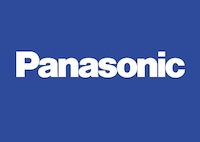
This is another in a series of interviews I conducted in Japan in early March of this year, a trip I managed to sneak in just before the Coronavirus travel restrictions. Between the COVID situation, the sale of IR, and a number of other lingering content projects I needed to finish, I'm only just now managing to post it. World events have overtaken my questions at the time about the projected impact of COVID on Panasonic's production capability, so I reached out to them for an update before posting this story, and have replaced the earlier questions and answers on the topic with the fresh information below.
My interview here was with Mr. Yosuke Yamane, Director of Panasonic's Imaging Business Unit. Yamane-san has been the driving force behind Panasonic's digital camera development for many years now; he told me he had been planning to develop full-frame cameras as far back as 2011, when I last met with him in Los Angeles back in early September of 2019.
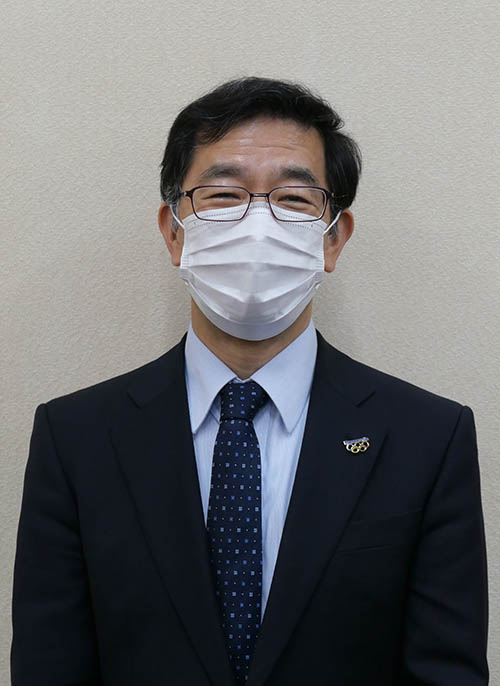
Yamane-san is a great interview subject, I always come away feeling that I have a solid sense of how Panasonic views the market, and what they're planning, at least to the extent that any executive can say anything too specific about future plans. Without further ado, let's dive into my disussion with Yamane-san:
DE: What is Panasonic’s current situation, in terms of your manufacturing, your supply chain, and your ability to continue shipping cameras and lenses?
Mr. Yamane: Supply chain and production have been affected by COVID-19 but it is now back to normal. As an unpredicted effect, users’ needs for the LIVE Streaming function is growing more than expected, and we had faced temporary production shortages of some models for a period of time.
[This was unexpected and very interesting to me. I’d been aware that webcams are in very short supply globally, because so many people in the pandemic era are having to meet via video conferencing apps, rather than in person. Along with several other manufacturers, Panasonic has recently released software [https://www.panasonic.com/global/consumer/lumix/lumixtether.html] to let you use some of their cameras as webcams. They first released a beta version of their LUMIX Tether for Streaming program for Windows computers in early June, following up with a Mac version in mid-July. I’d been thinking of such programs as mainly just a nice thing manufacturers were doing for their existing users, but apparently it had such a positive impact on Panasonic’s sales that they had to work hard to keep up with the demand. The Lumix Tether for Streaming software supports their GH5, GH5S, G9, S1, S1R and S1H models. These aren’t cheap cameras; the least expensive would be the G9, which can be had for $997 in the US, body-only. I’m guessing that the availability of streaming software led many existing Panasonic users to upgrade to one of these models. Rather than drop $150-200 for a name-brand webcam that would only be useful for video conferencing, they chose to buy a new body to update their Panny-based photography or videography kit. In the face of so much bad news about the COVID pandemic, I was glad to hear this little bit of positive news from a camera maker :-)]
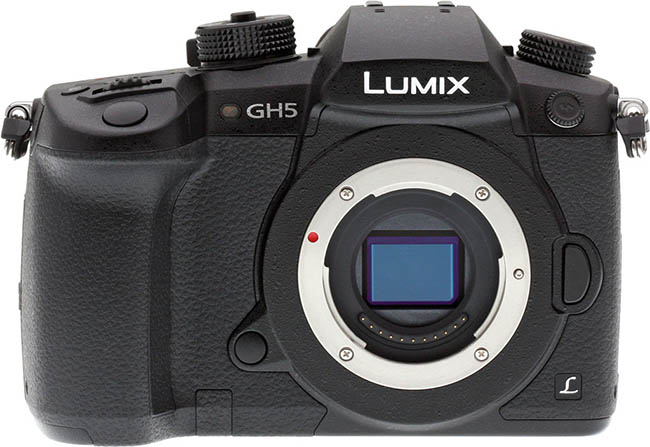
DE: Are sales coming back in some areas while continuing to decrease in others? What is the general direction globally?
Mr. Yamane: Our sales are on the track to recovery. Especially in the US, where video demand is high, it has been recovering faster than we expected. China showed the fastest recovery, and our sales there went well at an online sales event. On the other hand, the negative effect of COVID-19 in Asia and Europe still remains and market demand in those regions has been recovering rather slowly. We will keep promoting the advantage of Lumix, namely high video performance in compact bodies, to meet rapidly rising needs of individual live streaming during the “Stay at Home” period. We do believe that a brand new imaging world will open up after overcoming the COVID-19 pandemic. We’ll never slow down our product development toward that new era.
[It’s significant and also encouraging to hear that Panasonic isn’t slowing their product development any as a result of the pandemic. It makes sense, in that they have to continue advancing to gain and maintain market share, but I still was encouraged to hear that they are pressing ahead with product development despite the impact of the COVID pandemic.]
DE: Turning to your products, we at IR liked the S1 and S1R very much. They seem to have been very popular among photographers who have used them. How have they been received by the market, and have sales matched your internal expectations?
Mr. Yamane: The S1 and S1R models are addressed to high-end customers or professionals, so cost more than three thousand dollars or Euros. Originally, we were not targeting a mass market, but a high end market. And in this market, the S1 and S1R were very highly evaluated, and lots of photographers and videographers started using these models. As you know, we were awarded the Camera Grand Prix in Japan for the first time in Lumix history, and so I think we are able to deliver the message to the global market that we are seriously developing and entering the full-frame market. So that [level of] seriousness, this kind of message, we can bring to the global market.
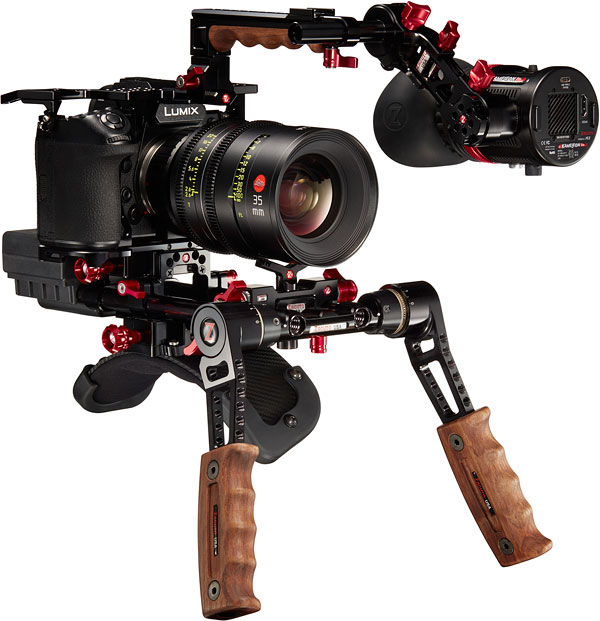
DE: While part of the same line, the S1H is a very different product, but it seems like a real breakthrough for commercial video production. How has it been received, and do you see it being a major driver for S1 sales? Or is video production a smaller market than still photography, or that for hybrid still and movie cameras?
Mr. Yamane: Sales of the S1H exceeded our expectation, yes. This model is targeted to middle-range, low-budget cinema and video production companies. And these videographers and cinematographers, they love this model. Fortunately, this camera was selected as a main camera or A-camera for Netflix, so we are very happy to hear this news. [Ed. Note: This is a very significant factor; Netflix acceptance opens a lot of doors for a product, across the new video production landscape.] So we could increase the awareness of our Lumix video performance, and we could raise [the image of the Lumix brand for video work] by this model. So working with videographers and cinematographers, the S1H is a very successful example of how we can improve the Lumix image. We don't expect [sudden, high volume] from the S1H. This model will not sell in high quantity all of a sudden, however we are trying to enhance this model for the target customers, and hope many videographers and photographers will actually use and appreciate it. To do this, we will expand the range of lenses which have advantages for video and cinema shooting, not only photo shooting. So the lens lineup will also become stronger.
[My take: There's a huge potential market for the S1H, but it's taking time for people to switch over and commit to it.]
DE: What sorts of lenses are videographers and cinematographers asking for?
Mr. Yamane: Yeah, so we have already introduced the basic lenses, like constant f/2.8 zoom lenses; we have several of these in the lineup. But on top of this, we will introduce three prime lenses, and also these models will be adapted for various kinds of video shooting. So the prime lens [lineup] will be strengthened. So this is the...
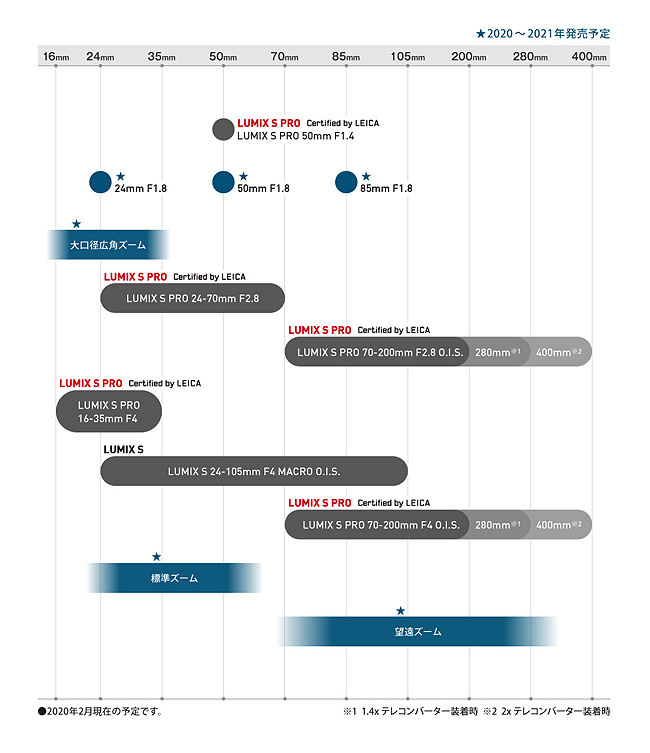
DE: *being shown press materials* Ah, so, 24mm, 50mm and 85mm, and also some mystery lenses.
Mr. Yamane: Mystery lenses, yes. This is the wide-angle, and standard lens and zoom lens. Yeah, we are hearing the requirement from the cinematographers and videographers for telephoto or even super-telephoto lenses. However, is that really a suitable concept for the S1H? That's what we have to clarify, and if so, we will go ahead to develop the telephoto and super-telephoto. But we are still investigating.
DE: So you are hearing requests, but you're wondering if it's really an appropriate concept for the S1, and you're studying...
Mr. Yamane: The big advantage of the S1H is compactness. [Ed. Note: Compactness may seem like an odd characterization of a full-frame interchangeable-lens camera, but it’s important to note that what video pros are comparing it to are things like Panasonic’s industry-standard Varicam models. In that context, the S1H is very compact indeed.] And despite the compact body, it has a full-sized sensor. But anyway, mobility is the advantage. So super-telephoto lens like [unintelligible], does it match with the S1H? This is what we have to clarify. For telephoto or super-telephoto, maybe we should go with the Micro Four Thirds, which makes a more compact package with high-zoom. So we are studying the future development plan, including Micro Four Thirds.
DE: That actually leads right into my next question, which is about the strong focus on video for the S-series. What does that mean for the GH product line? It's been more than two years since the GH5S was announced, and three years since the GH5 was announced in 2017. Do you see more evolution of the GH line, or has that line's role been taken over by the S1 series?
Mr. Yamane: We introduced the S-series of full-frame cameras, and we target high picture quality with the S-series. However, there is some video footage which only Micro Four Thirds can realize, in terms of optimum depth of field, mobility, zoom ratio and so on. So Micro Four Thirds is also a precious asset for us to cover video shooting needs. The GH-series has been already used by lots of videographers, and it is used for high-end video shooting by one-man operations. So without fail, by using the GH, customers can make very attractive footage using the characteristics of Micro Four Thirds. We are now studying how we are going to evolve GH series going forward, [to make the most of its advantages].
DE: Hai. (Yes)
Mr. Yamane: Thanks to Micro Four Thirds' smaller sensor size, it is good for high-speed response; high frame-rate video
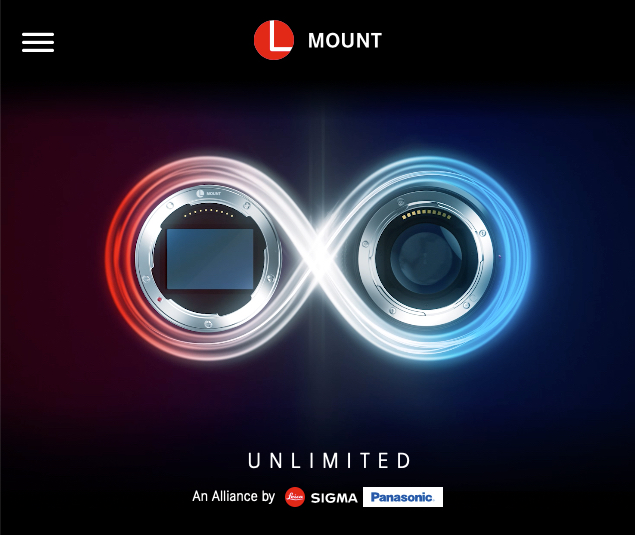
DE: So it's good for super slow-motion, very high frame-rate, hai. With respect to the S-series, it’s now almost 18 months since the L-mount alliance was announced. What is your view of how it is going? Are you satisfied with the pace of development across the partnership? Do you feel like that group of products across all three companies has been selling to expectations?
Mr. Yamane: Yes, it's been 18 months since we started the L-mount alliance. We introduced the S-series, and Leica introduced the SL2, and Sigma introduced the fp. These models are all different, so this is a point where I'm very satisfied. Three companies pursued different concepts to target different customers. This is very good for the alliance, so the L-mount itself is evolving very strongly. We'd like to promote the advantage of the L-mount in a major tradeshow, and originally at CP+ we planned to have a joint L-mount booth: Three companies, and we all work together, and customers can try all the different bodies and lenses for L-mount. [Ed. Note: The CP+ trade show in 2020 was unfortunately cancelled, due to the COVID crisis.] Going forward, we'd like to do this kind of activity in the global market. And Yamane-san is working together with the alliance partners, firstly to investigate what are the strengths of the L-mount, and then how are we going to make it stronger? We will present the good value of the L-mount for the global customer.
DE: Hai. This goes back to video a little bit. Your own S-series is very strong on video features, and Sigma's fp also seems aimed at videographers. Do you think the efforts of the other L-mount alliance members will help drive the platform's adoption by video makers?
Mr. Yamane: Yes, we believe L-mount is a highly optimum mount for video shooting. And so going forward, we'd like to make L-mount a standard of the video shooting industry. Within the alliance, we'd like to discuss how to strengthen our video performance, and make it a kind of a standard for the video shooting world.
DE: You hope L-mount could maybe become like the PL-mount, so very popular.
Mr. Yamane: Yes. Yeah, this is my personal hope, that L-mount could be the standard format for video shooting.
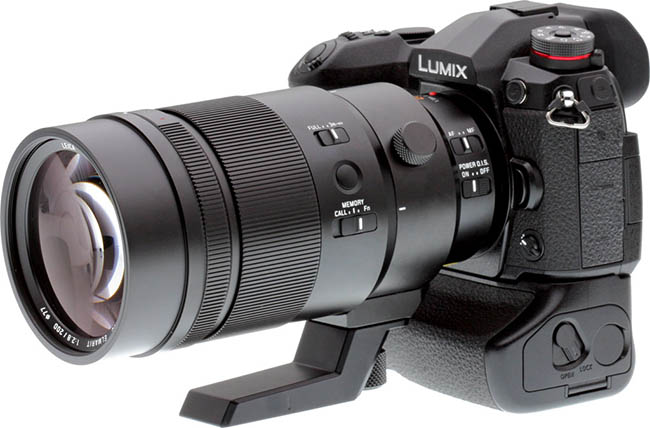
DE: The next question is about the G9. It has been three years since it was announced, and I think it was you who told us that it was always your dream to make a full-frame camera some day. Now that you have the full-frame, though, will Micro Four Thirds models maybe get less attention going forward?
Mr. Yamane: As for the G9, it has been only 2.5 years, sorry.
DE: Ah, gomen nasai! (Excuse me!)
<laughter>
Mr. Yamane: By introducing the G9, I think we could deliver the message to the global market that we are very serious about photography. And so [to support] this message, G9 is pretty highly evaluated, and sales volume-wise, is very big for us. How will we evolve the G9? We are now studying the balance between full-frame and Micro Four Thirds in terms of the value which we can provide by the large sensor size of full-frame, or the value which we can provide by the compactness of Micro Four Thirds. By studying this balance, we are now considering the future development of this category.
DE: Ah, hai. So it's not just a matter of what your focus is, it's understanding for the high-end market, what balance of features they want, depending on the application. Right. At the lower end of the market, how about the GX line? Personally, I have always liked the GM series, and it was what I would always carry on trips. (I brought an LX100 II this time, though.) But it seemed the GM series never sold well outside of Japan, or at least that was my impression. Do you see a future for that very small form factor, or will more of your efforts be focused in other areas?
Mr. Yamane: Looking at the evolution of smartphones, they will have a multiple sensors and lenses to adapt to various focal length shooting conditions. So this category is gradually being taken over by the smartphone. Especially compact cameras with middle-range zoom lenses, they will be the most affected by the smartphone evolution and expansion of the smartphone. Personally, I use LX or GX for snap shooting, and this is very effective. But we have to admit that this category is the most affected by the smartphone's expansion.
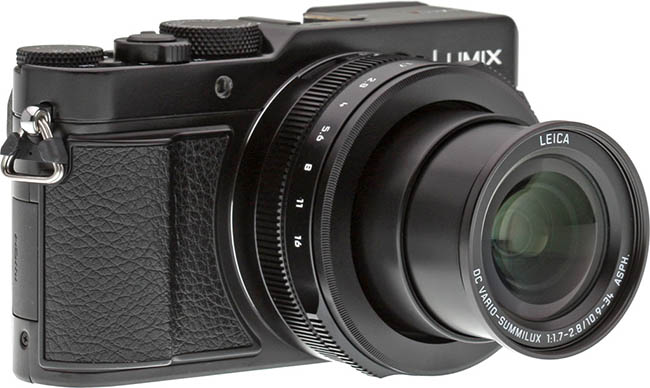
DE: I guess also the LX100 II... our impression was that it and the original LX100 were quite popular, especially because of their very wide-aperture zoom lenses. I guess it's also compact and mid-range zoom, but has a very bright lens. Do you think that is also being affected by smartphones?
Mr. Yamane: Yes, as I said, this category is affected by the smartphone's expansion. But still, there are people who continue to use this model. But we have to admit that this category will be going down. And so as a camera business, we have to decide the priority of the development resources, which category is the most important. We have to study for the future.
DE: Hai. We thought the G95 was a very interesting camera because it was a great example of a hybrid still and video. And also it was the first Panasonic Lumix G to include log video right out of the box. Can you comment on the market response to that camera? The inclusion of log video made it seem that it was aimed at more serious video shooters. Was that actually its intended market, and how has the response been to it?
Mr. Yamane: Yes, relative to the G95, in this price zone, we have a considerable number of Lumix fans. They appreciate this hybrid concept, and also the cost performance for hybrid operation. So these Lumix fans appreciate the hybrid performance of G95.
DE: Ah, so you have Lumix fans in particular like that hybrid, and this is a model that was really [trails off]. Hai. And I think we are almost out of time. Thank you very much for your time!
Mr. Yamane: Thank you!
Closing thoughts
This was an interesting conversation as always. I was surprised by how large a positive impact COVID had on the sales of some of Panasonic's cameras, namely the ones supported by their recently-released webcam software. I'd always thought of such software as just a thoughtful gift to existing users rather than something that could drive new sales. I'm glad to hear that it did for Panasonic, though; it was nice to hear at least a little positive news in the middle of what's being a very trying time for everyone.
It was also interesting to hear that sales are rebounding, at least in the US and China. My naive sense had been that the virus peak has come and gone in most of Europe, while the US is still in the middle of its second wave, so I was a bit surprised to hear that sales seem to be improving more rapidly in the US than the EU.
Also encouraging was the fact that Panasonic isn't slowing the pace of their development at all in the face of the crisis. Yamane-san's comments in this area have just been reinforced by their recent teaser announcement the S5, to be formally announced on September 2.
Panasonic certainly seems to be making a major investment in their full-frame S series, with three camera models already out, a fourth just now being teased, nine lenses either out or nearly out, and another three on the way shortly. ("Shortly" being open to some interpretation though; in the case of the "mystery zooms", it seems to mean somewhere between now and the end of 2021.) I don't think I've ever seen a new camera platform spring so rapidly to life as the L-Mount. When you combine the offerings of Panasonic, Sigma and Leica, there's already a very impressive range of both bodies and lenses available, in less than two years since the alliance was first announced.
From Yamane-san's comments, it appears that the GH line of video-oriented Micro Four Thirds cameras has a very solid future. He noted that their compact size and affordable prices fill an important niche, particularly for one-man videography businesses. The fate of their high-end MFT bodies seems a bit less certain, though, as Panasonic tries to discern whether the high-end enthusiast market will continue to be interested in that category or instead be lured away by the advantages of larger full-frame sensors. (For what it's worth, I think there's absolutely a market for compact high-end cameras, but Panasonic's view based on actual sales figures for their own products might well be different.)
Finally, sadly but perhaps unsurprisingly, it seems that the time has passed for compact enthusiast models like the LX-100 II :-/ There's just not enough differentiation between cell phones and a product like that to sustain it in the marketplace.
All in all, it was an interesting conversation, I hope it was the same for all of you reading this! Many thanks to Yamane-san and the others at Panasonic Osaka who made this interview possible!
What do you think? Questions, comments? Leave them below, I'm always happy to discuss! :-)